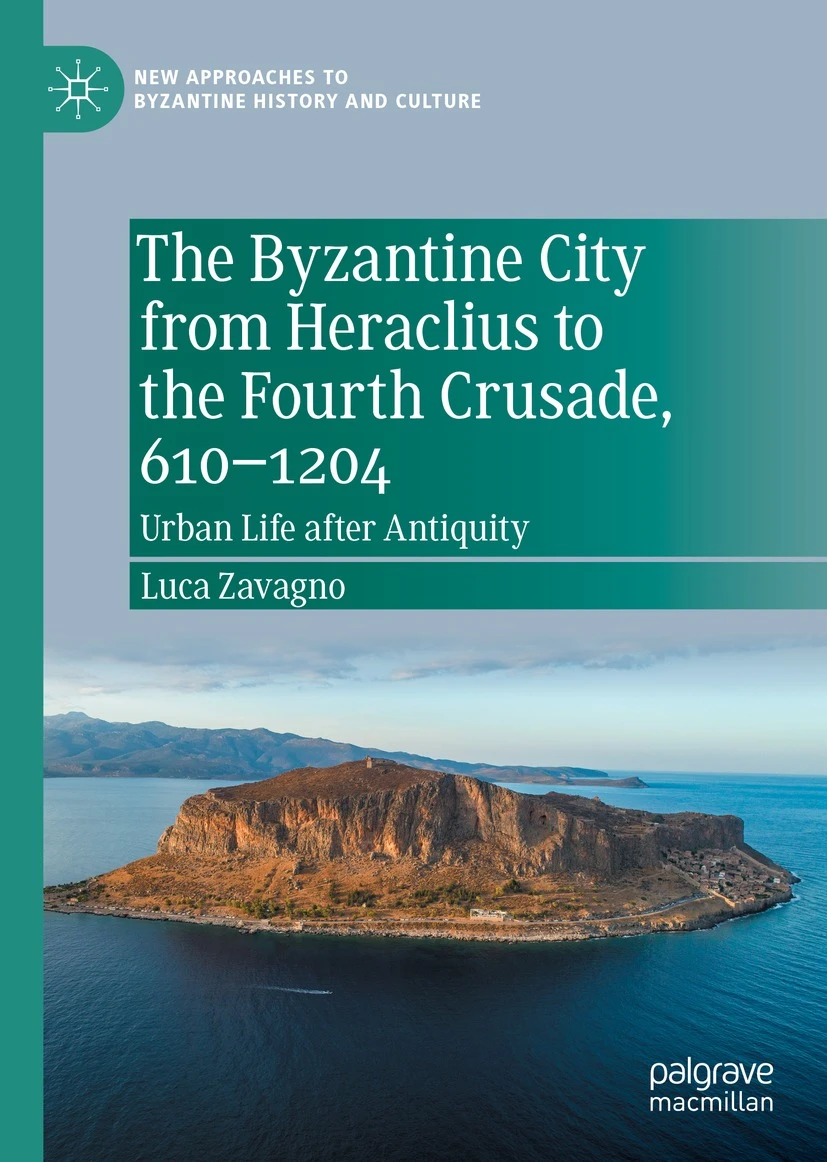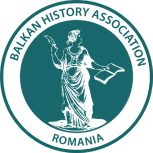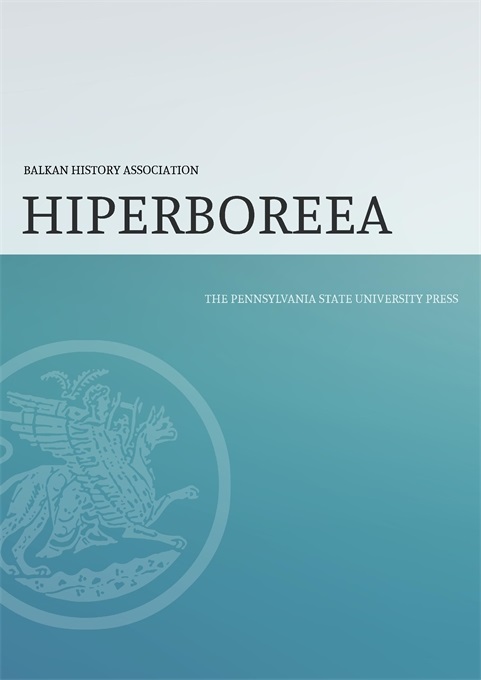
Over the last two decades, the old conception of the Classical civilization’s decline in the Mediterranean area has become more and more replaced with a different vision that could be summarized as “The Transformation of the Roman World” (which is the title of a series of books that produced substantial contributions to the study of the period between 3rd and 7th centuries). Luca Zavagno, who has already published in the past decade some preliminary studies on the topic at hand, presents us with another work that fits within the existing paradigm of Classical studies, as applied to the evolution of urban life in the eastern part of the Mediterranean.
In the first chapter (“The Byzantine City: A Symphony in Three Movements”) the author lays out the methodological framework for the study of the different transformations of the landscape and functions and structure of the Byzantine cities in Asia Minor, in the islands and in continental Greece. He insists on the definition of the “Byzantine city” as a multifunctional settlement, whose evolution was influenced by the dynamic relations between its social composition and the urban structures. For instance, it was observed that the urban functions were often dispersed in different places (in Epirus, the bishoprics were located in settlements with a hybrid character, between rural and urban). The fluctuating use of the public and private functions of the urban space traced by the archaeological research in different cities attests to the survival of urban life, and contradicts the idea of the constant crisis which would have followed the beginning of the 7th century.
The second chapter (“The Historiography of Byzantine City: Interpretations, Methodology, and Sources”) is a detailed survey of the debates on the fate of urban life between 7th and 13th centuries in the Mediterranean space. The now prevailing opinion contradicts the idea of a decline specific to that period, by including it in a larger perspective of a longue durée of adaptations determined by interactions between the central and local administration, the Church, the hinterland of the cities and the macro-economy of the whole Mediterranean area, in which the Byzantine cities were interconnected. The development from one type of urbanism (Roman) to another one (the early Byzantine) was shaped by the exchange systems of the entire Mediterranean scale, in the same way as the Italian merchant city-states. This process was not a decline, but a transformation, evidenced by the archaeological research which attests to the development of the artisanal and commercial activities in cities like Corinth, Thebes, Monembasia or Athens.
A particular problem is the significance of the names applied to the Byzantine cities, such as polis and kastron. The presence of bishoprics was defining for a polis even if the settlement was in decline, while kastron (used after the 7th century) was specific to any fortified administrative or military center. The presence of a bishop or of churches with relics of patron saints enabled the resilience and development of urban life. They gave spiritual protection to the cities whose strong walls, built in many cases with recycled stones, and not always erected in response to attacks, attest to the need for security for the new kind of urban community. Some data about city life was provided by hagiographies, but the progress of the archaeological research offers now a different view than that proposed by Aleksander Kazhdan in 1954, namely of the decline and revival of the cities in the framework of a feudal system.
The decreasing number of coins is not a testament to collapse, but a lesser need for cash in the new type of settlements and for the new type of military organization, as was demonstrated by Michael Hendy. On the contrary, the study of Byzantine pottery production reveals a flourishing economy, integrated in the Mediterranean space, which contradicts the catastrophic vision supported, for instance, by Clive Foss. Currently, extensive excavations and the refining of ceramics studies are providing a better understanding of the Early Byzantine urban economy. The survival of urban life was enabled by the coastal position which gave to those cities the opportunities to belong to what could be called a Byzantine koine. The development of the urban centers was also stimulated by the presence of the archontes, the local aristocrats, who founded churches, monasteries and other buildings. Their need for various goods determined the growth of trade and artisanal activities in the cities. The Italian city states had a certain influence in this evolution.
In Chapter 3 (“Urbanism in the Byzantine Heartland and the Coastal/Insular koine”),the evolution of urban life in three regions, Anatolia, the Aegean heartland, and the islands or other littoral places, is discussed according to the available literary sources and archaeological excavations. In Anatolia, one of the best researched cities is Amorium, whose importance as theme residence increased after the middle of the 7th century in relation to the needs of defense against Arab attacks. The upper part of the city, soon rebuilt after the siege of 838, remained an important military and economic center until the expansion of the Seljuqs.
Another city from Anatolia, Ancyra, also illustrates the resilience of urban life after the grave Arab attack of 838, while at Amastris the development benefitted from shipping connections. Other Anatolian cities that preserved a high level of urban life were Nicaea, Ephesos and Attaleia. In the Aegean heartland, Thessalonike is impressive for its strong fortification system (several times repaired after earthquakes), but also for the flourishing economic life ensured by the harbor and by the influx of pilgrims. The prosperity increased when peaceful relations were established with the northern Bulgarian neighbors, for whom this city was a marketplace.
Second to Thessalonike in importance, Corinth was a terrestrial and maritime crossroad as well, whose prosperity was preserved during the early and middle Byzantine period, especially as a production center. On a lesser level, Athens and Thebes resisted as administrative and ecclesiastic centers, where the manufacturing activity is documented by the literary sources and archaeological discoveries.
A special case is Monembasia, founded in the 7th century as a refuge place. Its position ensured an important place on the maritime route between west and east, with commercial and military significance. The last section of the chapter presents several cities from the islands of Crete (Gortyn, Eleutherna), Cyprus (Salamis), Sicily (Syracuse, Catania, Palermo) and Sardinia (Cagliari), as well as from the Dalmatian coast (Butrint, Dyrrachium) and Crimea (Cherson). They belonged to what the author calls the “koine of the other sea”, a fragmented periphery of the Byzantine space, which remained more or less under the domination of the empire. The fragmentation of the maritime routes after the 7th century and the frequent Arab raids affected somewhat the economic life of these cities ruled by archontes or by strategoi, but the urban features survived, including artisanal activity (pottery, metal working, constructions).
The general conclusions (chapter 4) summarizes the considerations in regard to the resilience of urban life evidenced by archaeological research even for the worst period of the Byzantine Empire (7th-9th centuries). The reason for the survival of the artisanal and building activity was the presence of the secular and ecclesiastic elites in these cities.
As a general statement, it could be concluded that Luca Zavagno’s book provides a comprehensive critical overview of the research conducted on early Byzantine urban life, as can be seen from the large bibliographies annexed to each chapter. It is obvious that the author was able to manage a large amount of data from differrent regions of the Byzantine area and use them to demonstrate his approach to the problem of the continuity of urban life.
Alexandru Madgearu, PhD, Senior Researcher at the Institute for Defence Studies and Military History in Bucharest, Romania


